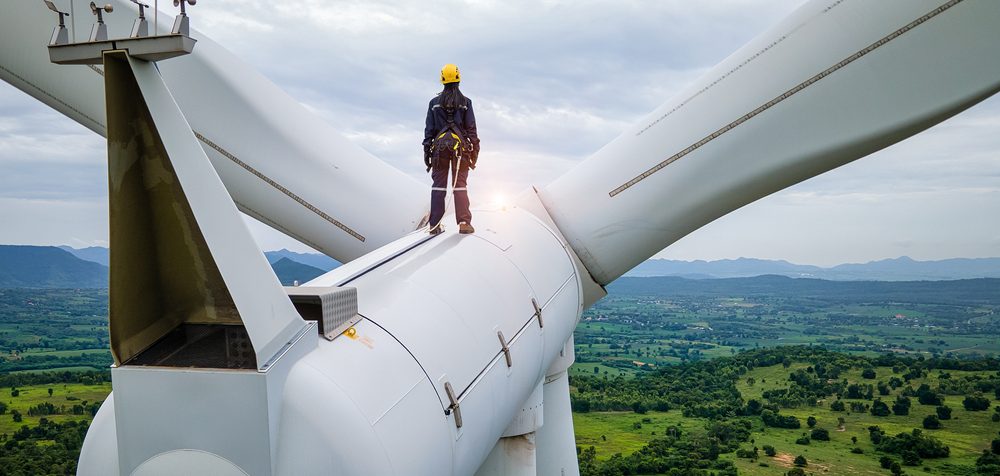
The formation of ice on wind turbine rotor blades causes a variety of problems, including rotational imbalance which leads to increased wear and tear. The Fraunhofer Institute for Manufacturing Technology and Advanced Materials (IFAM) and the Fraunhofer Institute for Manufacturing Engineering and Automation (IPA) have designed a solution to safeguard wind turbines against these environmental problems.
Previously. combating the problems caused by ice build-up has been expensive, due to the use of such solutions as heating mats integrated into turbine blades up to using helicopters for de-icing agent application. The use of these solutions also causes production interruptions as the turbines have to be shut down, often for days.
Fraunhofers’ solution – called “TURBO – Temporary coating by means of drones” – is a cost-effective alternative that could revolutionize the way wind energy is harnessed and maintained.
A key challenge for the team was to develop an environmentally friendly coating material that adheres well to the rotor blades, while also remaining durable for an extended period to ward off ice. Fraunhofer IFAM created a prototype coating made from urea and wax that can be efficiently applied using a spray technique that ensures quick drying. The coating was rigorously tested in an ice chamber, confirming its ability to reliably protect against frost formation.
Fraunhofer IPA designed specialized equipment to apply the coating precisely. It features an airless pump system with a lance and nozzle featuring a diameter of only 0.3 millimeters, enabling the spraying of droplets as small as 100 micrometers. This precision ensures that even at wind speeds of 35 kilometers per hour, the coating can be accurately applied by drones to the crucial edges of the rotor blades where ice first begins to form.
The researchers are currently working with industry partners to refine the technique further and prepare it for mass production. They envision applications extending beyond wind turbines, with potential uses in protecting overhead lines in rail transport and refurbishing challenging-to-reach parts of buildings.
